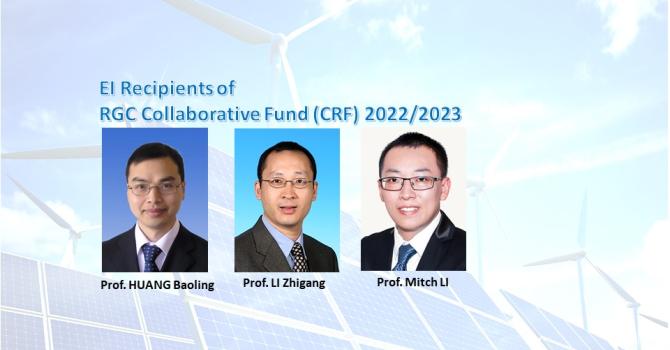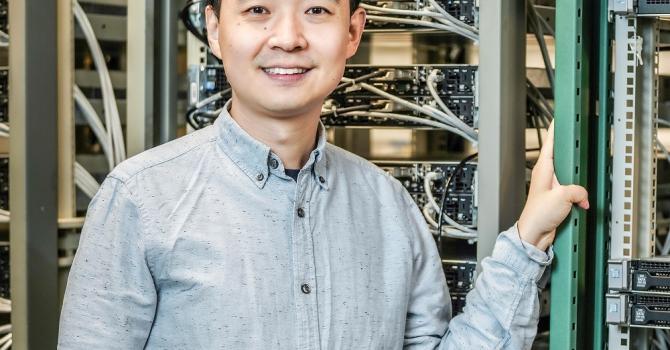EI faculty Prof. Yuanyuan (Alvin) ZHOU Awarded HK$3.6 million by NFSC-RGC Collaborative Research Scheme
Prof. Yuanyuan (Alvin) Zhou, Associate Professor of Chemical & Biological Engineering, was awarded HK$3.6 million by NSFC-RGC Collaborative Research Scheme (CRS) for his project “Multi-elemental Lone-electron-pair Cations Based Pb-free Perovskite Optoelectronics: from Materials design, Synthesis to High-performance Devices”. Only three projects in the area of “New Materials Science” across the entire Hong Kong have been funded under this scheme. In this four-year project, Prof. Zhou’s team aims to combine the theorical and experimental approaches and to artificial intelligence to develop new perovskite semiconductors without the involvement of toxic Pb for optoelectronic applications such as photovoltaics and light-emitting diodes.
Perovskite solar cells (PSCs) have emerged as a promising photovoltaic technology for integration into the future urban environment to power buildings and internet of things (IoT) devices. However, state-of-the-art PSCs contain toxic Pb, restricting the commercialization, while as-reported Pb-free PSCs suffer from the performance and stability issues due to the intrinsic materials shortcomings. This project proposes a multi-elemental strategy to design novel Pb-free perovskites based on lone-electron-pair cations for stable, efficient Pb-free PSCs and optoelectronics.
The field has been searching for Pb-free perovskite alternatives. As of now, potentially less toxic metal cations, including Sn, Ge, Ti, Bi, Sb, etc., have been used as Pb substitutes in perovskites, respectively. Amongst these options, Sn perovskite demonstrates the highest promise, but it still suffers from the high sensitivity to oxygen. Vast efforts have been devoted to modifying Sn perovskites, and other single- or dual-cation Pb-free perovskites. But the advancements so far have not brought sufficient excitement, calling for the re-design, exploration, and discovery of a new Pb-free perovskite system from a different perspective.
Therefore, Prof. Zhou proposes to examine and discover new promising candidates amongst the multi-elemental Pb-free perovskites, because the multi-elemental strategy largely expands the chemical space for structural and property explorations, and meanwhile, the syngenetic effects of tailoring structural factors (tolerance factor, octahedral factor), alloying ratio, and electronic dimensionality can possibly create new materials states. Prof. Zhou expect, by leveraging the strong existing research and collaboration foundations, as well as considering the vast space amongst the proposed multi-elemental Pb-free perovskite system, these project outcomes will impart impacts not only for developing high-performance devices for real-world applications, but also for unravelling new semiconductor sciences.

